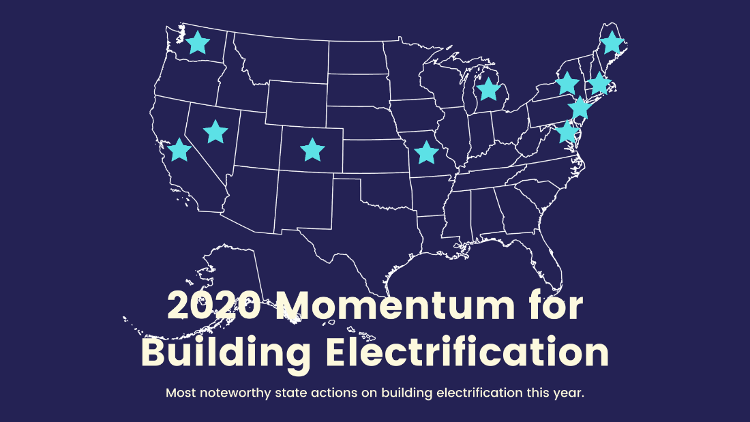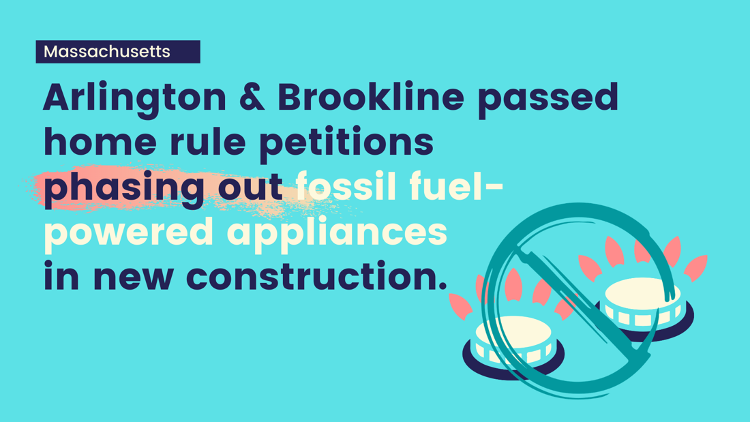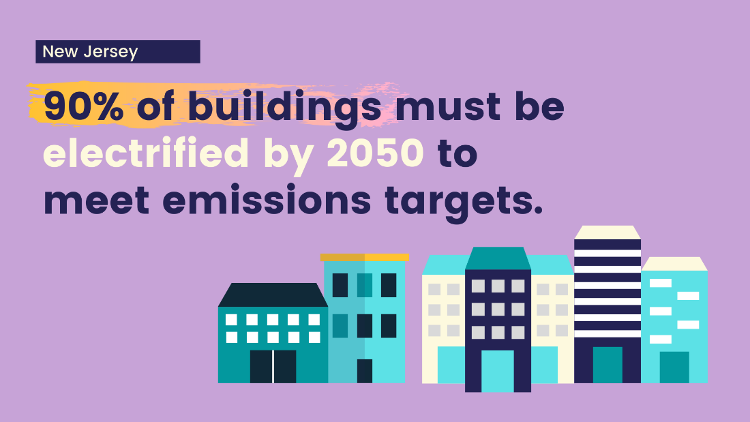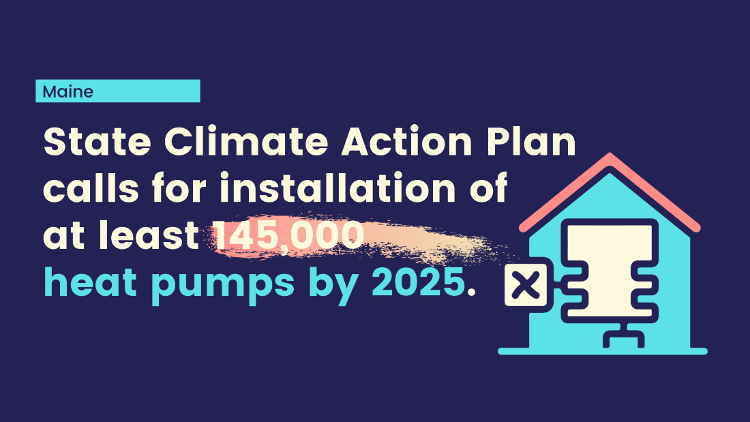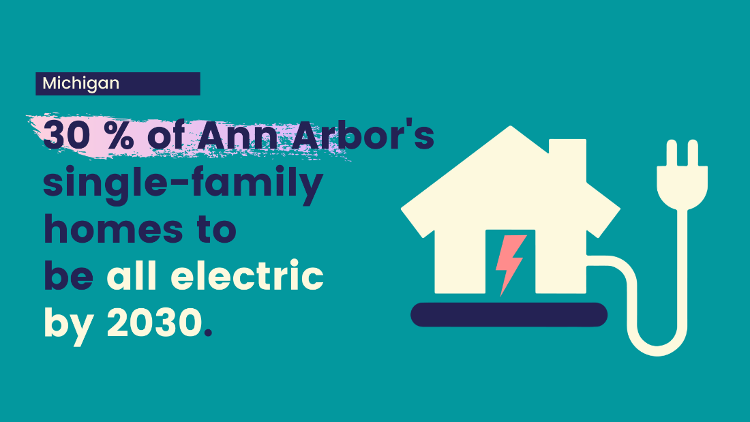December 19th, 2020 by Rocky Mountain Institute
Originally published by Rocky Mountain Institute.
By Talor Gruenwald & Mina Lee
While 2020 brought a host of challenges to the country, many states and cities still forged ahead with actions to address the climate impacts of a stubborn sector: buildings. Across the United States, local leaders are acknowledging the climate, economic, and health impacts of burning fossil fuels in buildings and accelerating the transition to modern, clean electric appliances.
From all-electric building codes to heat pump deployments, here is a look back at some of the most noteworthy state-level progress on building electrification this year. Together, these developments demonstrate the growing realization among policymakers that eliminating emissions from buildings is integral to limiting global warming to 1.5°C. Nowhere is this more evident than in President-Elect Biden’s ambitious climate plan, which aims to slash the carbon footprint of US building stock 50 percent by 2035.
Cities and States Enact New Policies
Many cities and states enacted new laws, updated building codes, and advanced regulatory action to phase out gas appliances and ensure homes are heated and powered with clean electricity.
California
- December: To date, 40 jurisdictions in California, including San Jose, the 10th largest city in the United States, have passed policies to limit gas appliances in new buildings. This signals far-reaching support and momentum for an all-electric new construction requirement ahead of the 2022 code cycle.
- November: The California Air Resources Board (CARB) announced support for an all-electric new construction requirement for the 2022 code cycle. The Bay Area Air Quality Management district also committed to taking significant action to limit emissions from gas appliances in buildings, including developing rules and indoor air quality guidance documents to reduce NOx emissions from these appliances. The new rules have the potential to drastically reduce the number of gas appliances in use.
- April: The California Public Utilities Commission (CPUC) committed $200 million to two pilot programs that will build all-electric new homes and finance market development of low-emission space and water heating equipment. These programs are an important demonstration of the feasibility of all-electric homes and a recognition of the role that electric space and water heating will play in the state’s climate change mitigation strategy.
New York
- December: Two New York gas and electric utilities agreed to stop promoting the use of gas, instead directing customers to information on how to reduce their gas consumption and adopt alternate forms of energy consumption, dealing a significant blow to gas system expansion in upstate New York. The two utilities were also denied funding to build and expand two major gas pipelines, and they agreed to develop strategies to reduce gas usage to align with the Climate Leadership and Community Protection Act.
- October: The New York City Housing Authority (NYCHA), the largest residential landlord in New York City, released its strategic plan to reduce carbon emissions from its properties to align with Local Law 97 and New York State’s 2050 economy-wide carbon neutrality goals. Widespread electrification of heating, cooking, and domestic hot water are central to NYCHA’s strategic plan.
Washington
- December: Seattle’s mayor announced that the city will update its energy code to eliminate the use of fossil fuels for space heating in new commercial and large multifamily construction as well as water heating for large multifamily construction. This will make Seattle the first city in Washington State to do so.
Missouri
- June: St. Louis established a building performance standard that mandates reductions in energy use intensity of large municipal, commercial, institutional, and multifamily residential buildings — making it only the fourth US jurisdiction to do so. Some buildings with gas appliances will need to convert to more efficient electric alternatives in order to achieve these reductions.
Massachusetts
- December: Two municipalities in Massachusetts — Arlington and Brookline — passed home rule petitions that would allow the towns to require all-electric appliances in new construction, if supported by the state legislature. With nine other municipalities actively researching and exploring similar ordinances, there is growing pressure on the state legislature to approve the petitions and allow all-electric implementation.
States Plan for an Electrified Future
Several states detailed the actions they will take to electrify space heating on the road to eliminating fossil fuel use in buildings, while others opened formal regulatory proceedings to draft plans that will transition utilities away from gas distribution.
New Jersey
- January: New Jersey released its Energy Master Plan, which stated that electrifying 90 percent of New Jersey’s buildings by 2050 is essential to meeting the state’s climate goals.
Maine
- November: Maine released its Climate Action Plan that calls for the installation of at 145,000 heat pumps by 2025. By 2030, 130,000 homes should have one to two heat pumps installed and an additional 115,000 homes will be using a whole-home heat pump system. With 550,000 total households in Maine, this adoption of heat pumps would represent the most decisive step towards full electrification of space heating in the state thus far.
Colorado
- September: According to a draft of Colorado’s Greenhouse Gas Pollution Reduction Roadmap, heat pumps must comprise over 60 percent of residential heating equipment sales by 2030 and over 95 percent by 2040. By 2050, more than 90 percent of space and water heating will need to be electric across Colorado’s buildings. The roadmap also acknowledged that the buildings sector must reduce emissions by 100 percent by 2050 to meet the state’s climate emissions reduction goals, emphasizing the important role building electrification plays in economy-wide decarbonization.
Michigan
- April: Ann Arbor released its A2Zero Climate Action Plan, which calls for 30 percent of single-family homes and 25 percent of all rentals to be all electric by 2030. If adopted, these measures would be the first of their kind in the state. In addition, all new residential and commercial buildings will have the capacity to operate without the use of fossil gas, reducing the cost associated with existing building retrofits in the future.
Nevada
- December: Nevada released its State Climate Strategy, which acknowledges the need to transition away from fossil gas use in residential and commercial buildings. The strategy cited an all-electric new construction requirement and a ban on the expansion of the gas distribution network as possible ways of accelerating the transition.
California, New York, Colorado, Massachusetts
- Regulators in these states opened investigations into the future of gas distribution, which could lead to utility plans to transition away from fossil fuels and align with the states’ ambitious emissions reduction goals.
Climate Change Task Forces Highlight Building Electrification
A few states convened working groups to address the overwhelming need to begin electrifying buildings as a vital part of their climate solutions.
Maryland
- November: In its annual report, the Maryland Commission on Climate Change recommended that 50 percent of space heating equipment sales be electric heat pumps by 2025. The commission also recommended that the Maryland Building Codes Administration require new construction to be all-electric for single-family homes by 2025, commercial buildings by 2026, and public buildings as soon as possible. These provisions would be the most ambitious actions on electrification in the state if adopted.
Connecticut
- September: Connecticut’s Mitigation Strategies Working Group recommended that the state’s Department of Administrative Services revise building codes to include an all-electric requirement. They also recommended that the state set an end date for the expansion of the gas grid and ban new gas installations on the existing grid. Expanding gas distribution networks and usage is incompatible with Connecticut’s emissions reduction goals.
Wisconsin
- December: The Governor’s Task Force on Climate Change released new policy recommendations, calling for reductions in energy use to be achieved through building electrification, among other methods.
With these developments, 2021 promises to be an even more important year for building electrification. Coupled with the new administration’s strong support, more states and cities are poised to make important progress on requiring all-electric appliances in new construction, phasing out gas appliances in existing buildings, and winding down the gas distribution system to protect the climate and future ratepayers alike.
Appreciate CleanTechnica’s originality? Consider becoming a CleanTechnica member, supporter, or ambassador — or a patron on Patreon.
Sign up for our free daily newsletter or weekly newsletter to never miss a story.
Have a tip for CleanTechnica, want to advertise, or want to suggest a guest for our CleanTech Talk podcast? Contact us here.
